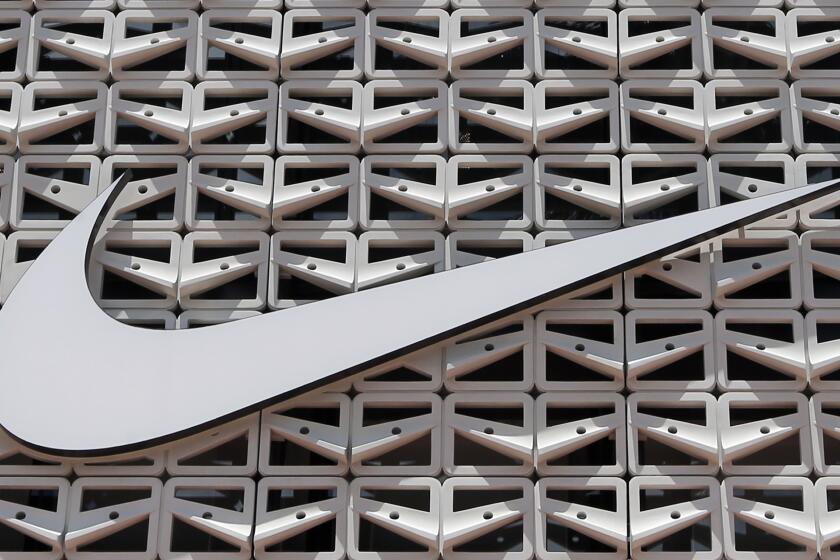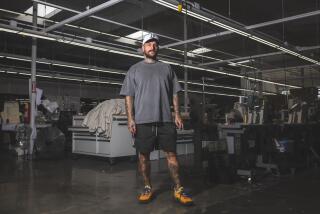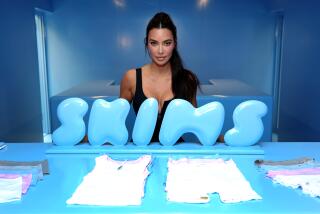As competitors falter, SoCal’s Skechers is surging with strategy of ‘try and try again’
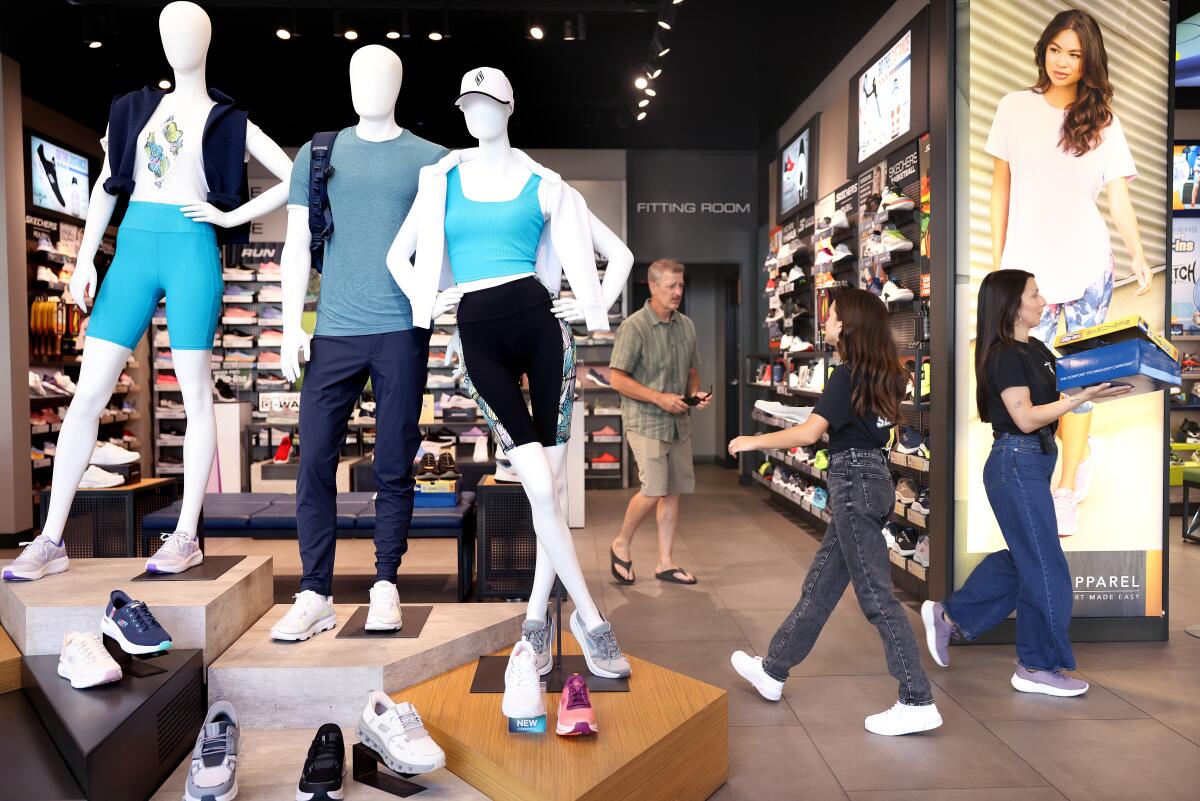
In a crowded sneaker market roiled by the stumbles of its longtime king, Manhattan Beach-based Skechers has been climbing its way up the ranks.
While Nike, which has dominated the athletic footwear landscape for years, made headlines last month for its plummeting stock price and gloomy outlook, Skechers announced record sales in the first quarter of 2024 of $2.25 billion, a 12.5% increase over last year. Since 2019, it has increased its annual revenue by more than 50%.
In June, Bank of America upgraded its rating on Skechers’ stock to a strong buy, and this week Morgan Stanley followed suit — notable votes of confidence in the fundamentals of a company that has seen its stock price rise more than 20% over the last year. Shares closed at $65.10 on Tuesday.
Analysts and company leadership attribute the brand’s success to a strategy built around constant innovation and a diverse array of footwear products. Sam Poser, a footwear and apparel analyst at Williams Trading, said Skechers is navigating choppy waters better than its rivals.
“It’s not like the macro environment is different for Skechers than it is for Nike or New Balance or Adidas,” Poser said. “One of the reasons they’re outperforming is because they’re executing in this difficult environment.”
While Skechers offers a wide variety of footwear — from soccer cleats to work boots to summer sandals — it has still managed to find a strong company identity, Poser said.
1
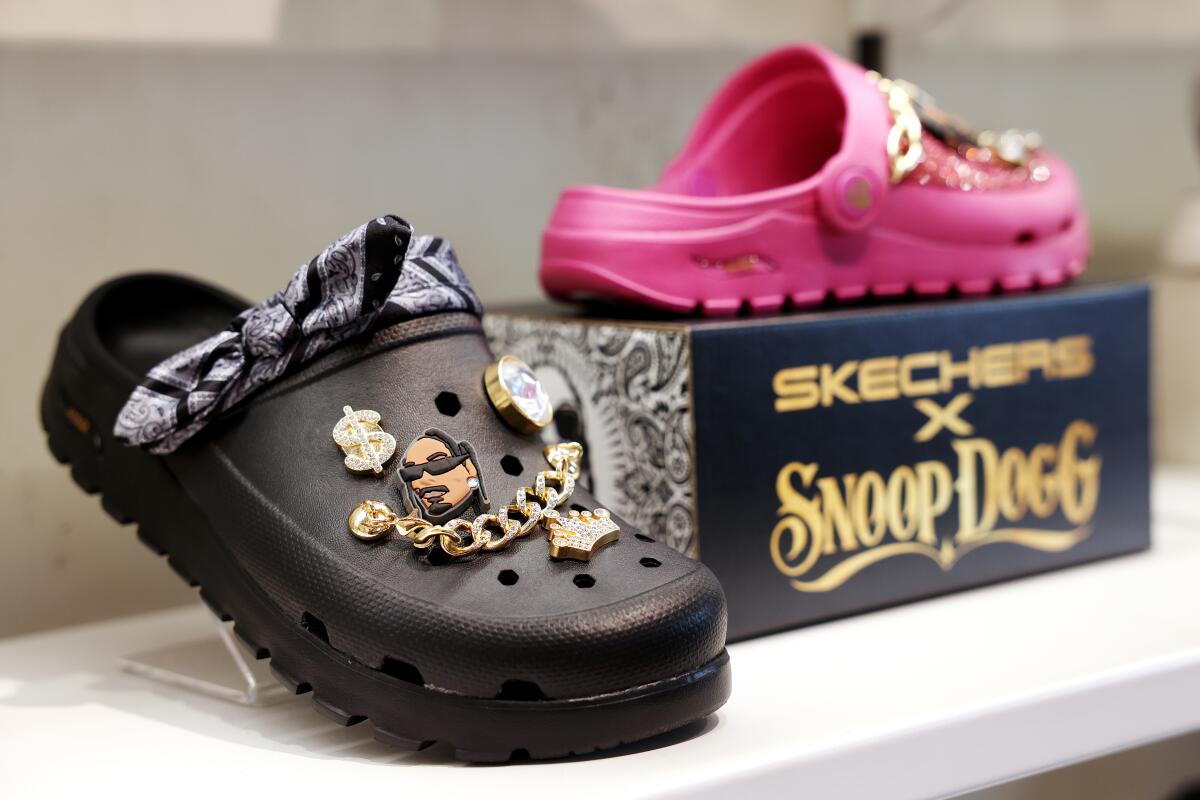
2
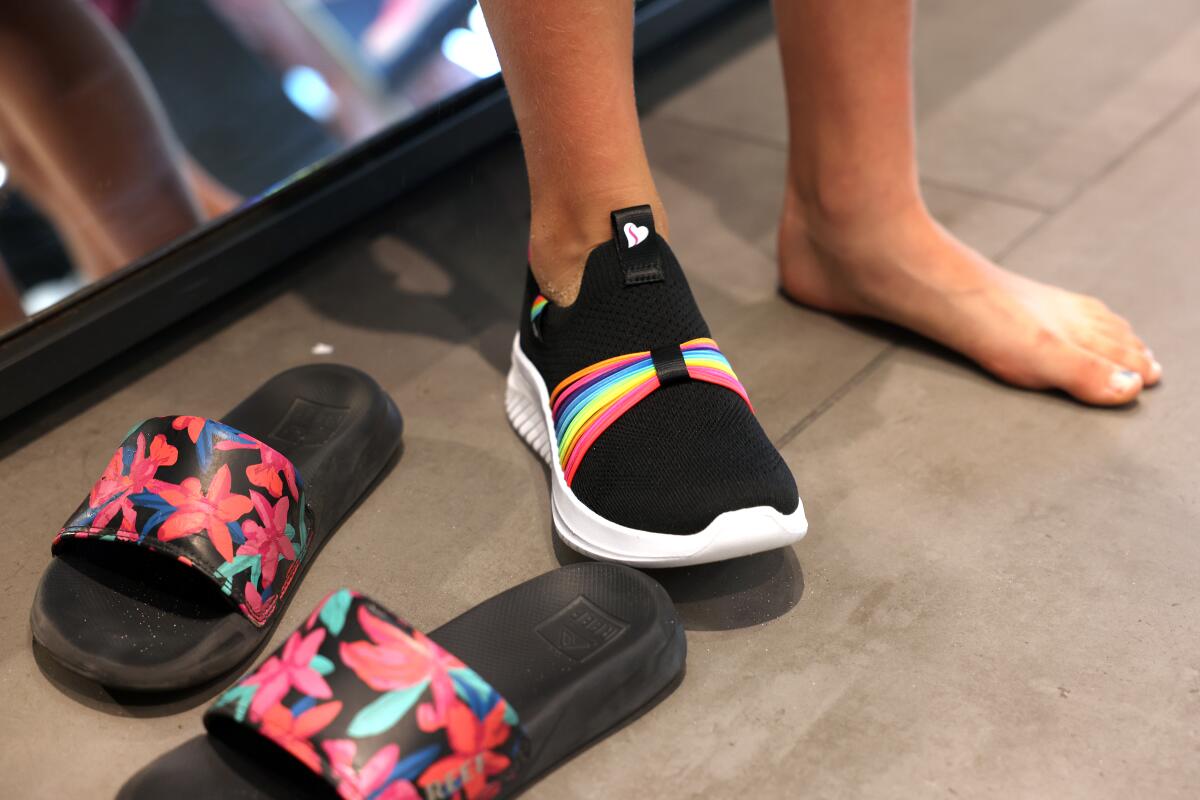
3
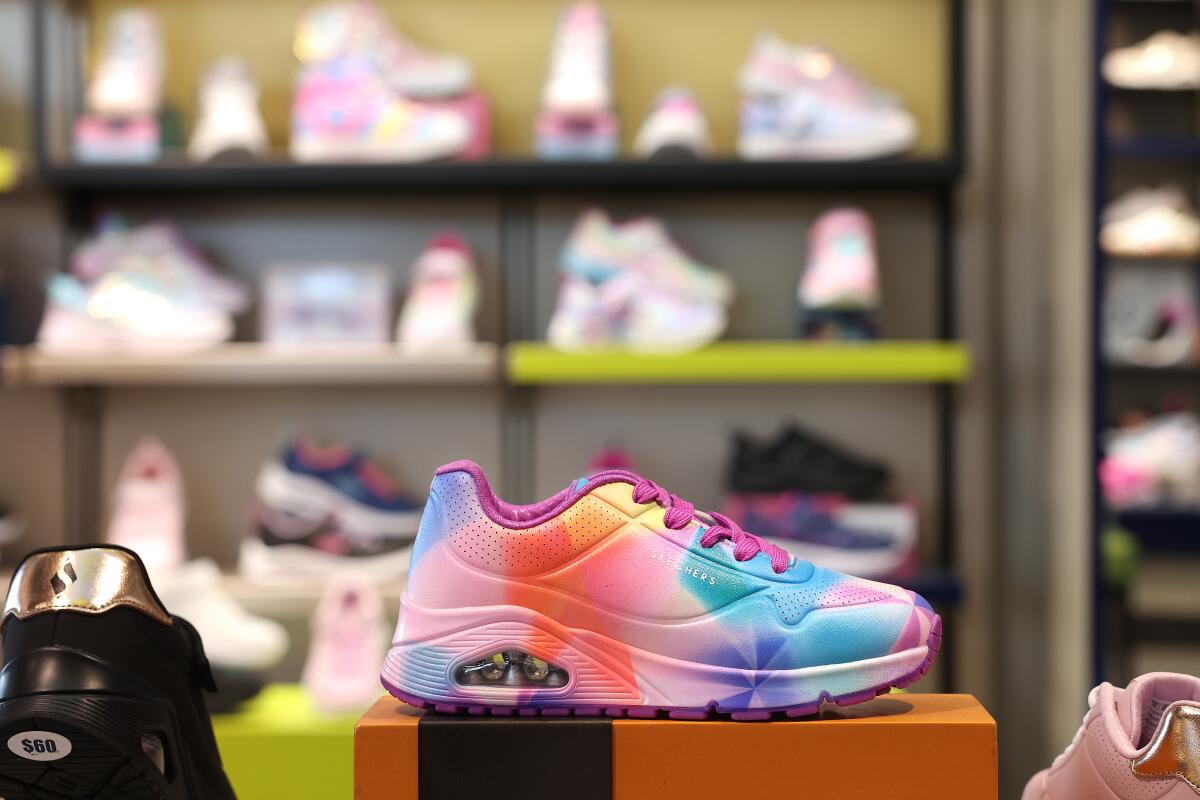
1. Skechers and Snoop Dogg collaborated on shoes. 2. Skechers offers a wide variety of footwear — soccer cleats, work boots, summer sandals and more. 3. Children’s shoes on display at the Skechers store in Manhattan Beach. (Christina House / Los Angeles Times)
“Skechers owns the comfort business,” Poser said. “What they’re doing is bigger than I think a lot of people appreciate.”
Skechers brought in $8 billion in sales in 2023 compared with $7.4 billion in 2022. The company has a near-term goal of reaching $10 billion in sales by 2026, said Chief Financial Officer John Vandemore.
The self-proclaimed “comfort technology company” has seen success with recent releases such as Hands Free Slip-ins and podiatrist-certified Arch Fit shoes. Its website lists 14 different footwear technologies, with names like Glide-Step and Hyper Burst.
“You have to be innovative and you have to deliver newness,” Vandemore said in an interview. “There was no analogy in the marketplace when we started Slip-ins, and it’s done exceedingly well.”
The company is scheduled to announce its second-quarter results on Thursday, with analysts estimating revenue of $2.21 billion, up 10% from the same period a year ago, and earnings of 92 cents a share, down 6.1% from a year earlier, according to Zacks Equity Research.
Not all of Skechers’ gambles have paid off, Vandemore acknowledged. Introduced in 2009, Shape-up sneakers were immensely popular until the company was sued by the Federal Trade Commission over its claims that the shoes would help customers lose weight and tone their muscles. Skechers paid $40 million to settle the class-action lawsuit in 2013.
Other Skechers models have seen longer-term success, such as the children’s line of light-up Twinkle Toes sneakers, introduced in 2008 and still widely available.
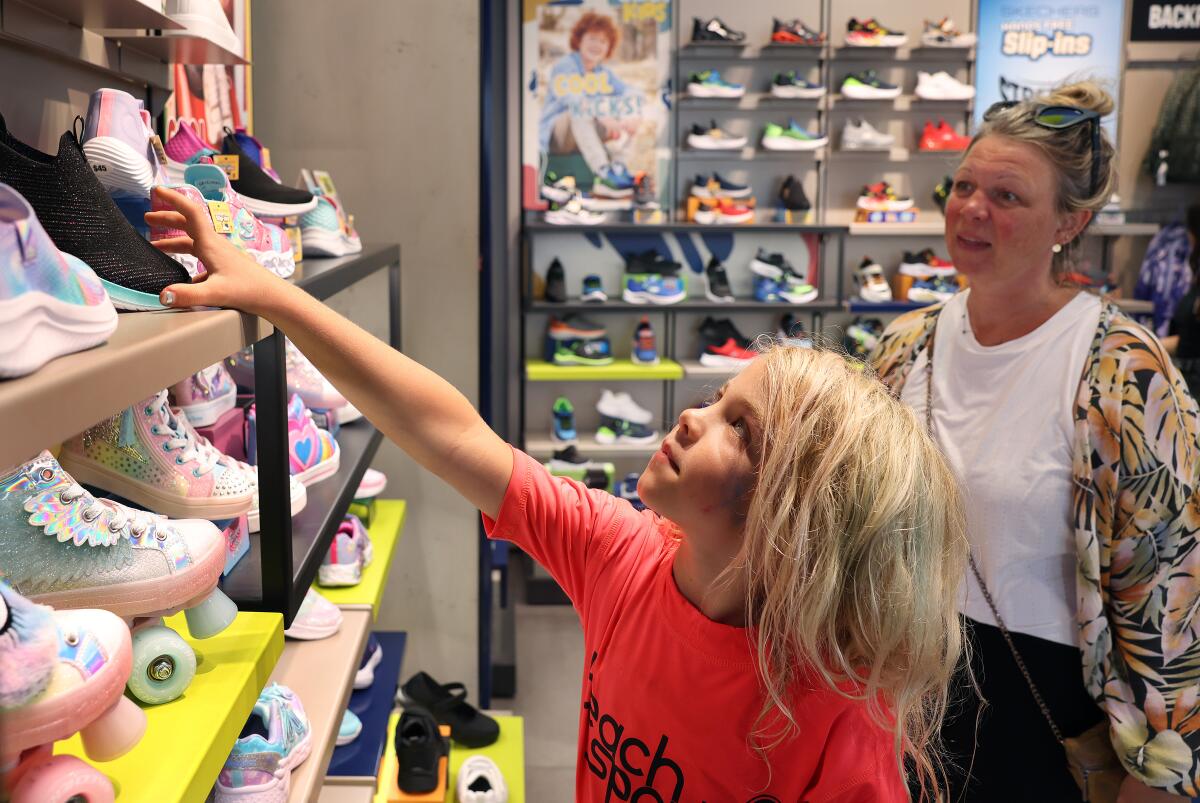
“I think that willingness to try and try again until you succeed is noteworthy and it’s led to a significant amount of success,” Vandemore said. He praised the company’s chief executive, Robert Greenberg, for his willingness to take risks.
“One of Robert’s key talents is being able to tolerate risks and, quite frankly, not dwell upon them,” Vandemore said. “In our culture we try a lot of different things. Some of them work and some of them don’t.”
In contrast, Poser said, Nike has not been able to come up with fresh offerings for consumers in recent years.
“Nike was not innovating enough and putting a lot of non-compelling product into the marketplace,” he said.
The world’s largest sportswear company has missed expectations on its full-year outlook, stoking investor concerns about waning demand and competition from upstarts.
When Nike released its tepid first-quarter earnings report in March, its chief financial officer, Matthew Friend, said the company was “taking action to build a faster, more efficient Nike and maximize the impact of our new innovation cycle.”
Along with a pipeline of new products, Vandemore said, value and affordability are among the brand’s top priorities. Several models featuring the popular Slip-in technology are available for less than $100.
“They’re delivering a quality product that has comfort and style at a reasonable price,” said Jim Duffy, a sports and lifestyle analyst at Stifel. “In an environment where the consumer is facing pressures to their discretionary spending capacity, Skechers is doing a very good job of offering value.”
In a trend brought on by COVID-19, Duffy said, more consumers of all income levels are buying and wearing athletic footwear. A nice dinner out may have required dress shoes before the global pandemic, he said, but standards have changed.
“COVID was an accelerator for casualization and that’s really expanded the wearable occasions for sneakers and comfort footwear,” Duffy said. “Skechers has done well to capitalize on that.”
Skechers’ customer base is mostly children and older adults, Duffy said, not teens and young adults. But Poser said the customer demographic varies largely across markets, both in the U.S. and internationally.
“It’s much broader than you think,” Poser said. “They have K-pop bands wearing their shoes.”
Last year, international sales accounted for 62% of the company’s global revenue. Vandemore said Skechers’ investment in growing its international footprint has provided the company an important boost in growth.
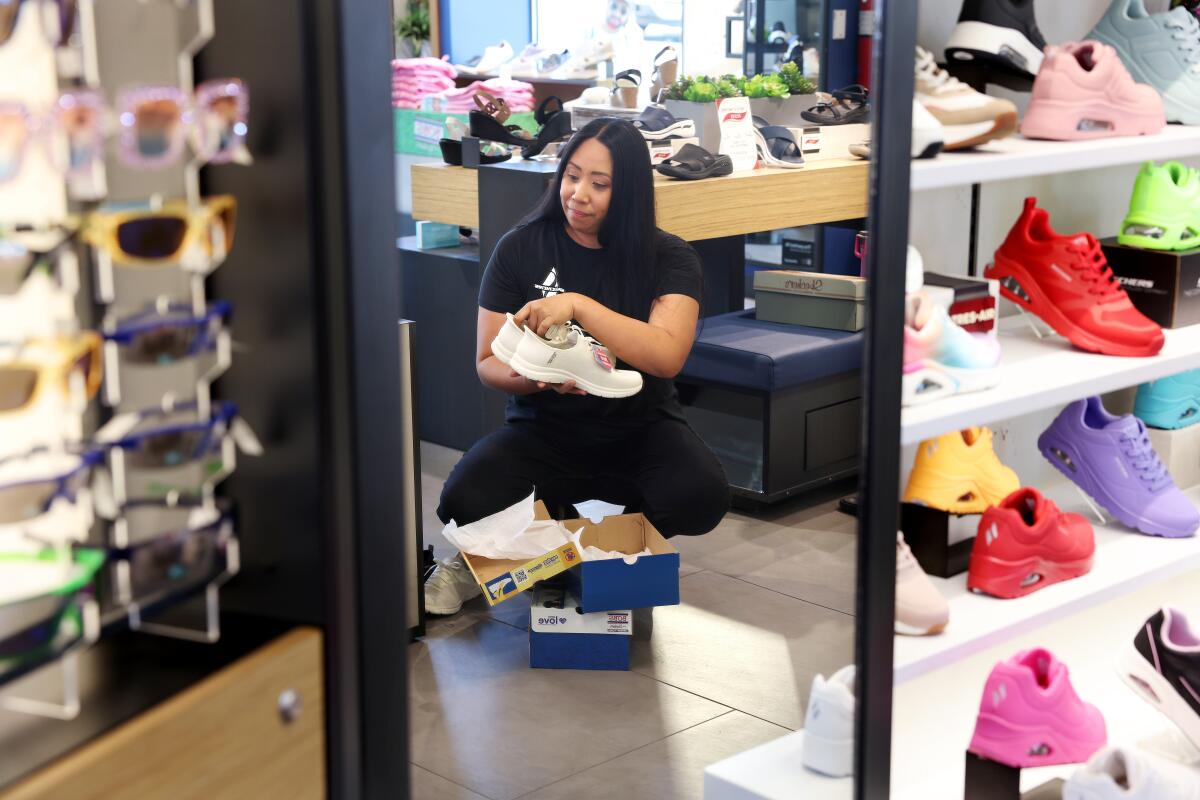
At the end of March, the company had slightly more than 1,100 international stores, 565 domestic locations and more than 3,500 “distributor, licensee and franchise stores,” according to company figures. The corporate offices in Manhattan Beach house 1,280 employees.
Vandemore also said the company’s balance of wholesale and direct-to-consumer sales set it apart from other brands in the industry.
“Some of our competitors have chosen to primarily focus on their own stores or their own online sales at the expense of wholesale partners, which is not our strategy,” Vandemore said. “We embrace all avenues.”
In 2023, 44% of Skechers’ annual profits came from direct-to-consumer sales and 56% came from wholesale business.
Looking to the future, Vandemore said Skechers will stick to its core strategy while adapting to new trends and demands.
“We’ve been very successful focusing on developing and delivering great products, growing our direct-to-consumer channel and growing internationally,” he said. “That formula, we do believe, will continue to yield results.”
More to Read
Inside the business of entertainment
The Wide Shot brings you news, analysis and insights on everything from streaming wars to production — and what it all means for the future.
You may occasionally receive promotional content from the Los Angeles Times.

